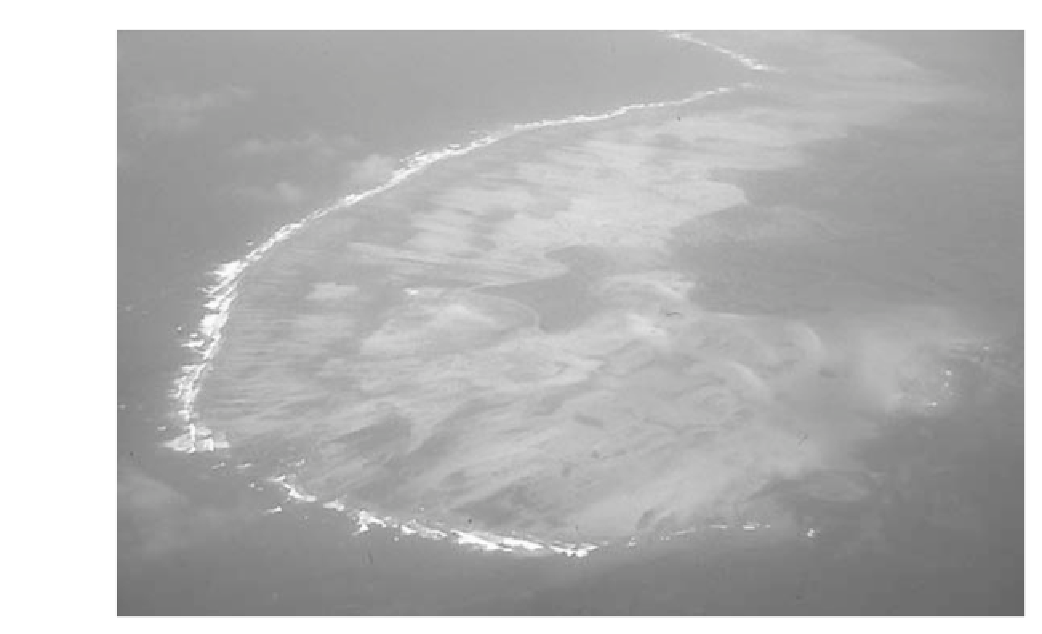Geoscience Reference
In-Depth Information
Fig. 9.2
Atoll reef showing extensive sheets of carbonate sediment (white areas) accumulated on the leeward side of the reef crest
(marked by the area of breaking waves), Courtown Cay Atoll, Caribbean. Field of view is approximately 1 km.
all areas of active coral growth (regardless of
wave resistance or framework-building potential)
along with the associated carbonate (or mixed
carbonate:clastic) sedimentary environment (e.g.
lagoons, seagrass beds) (Fig. 9.2).
The primary constructional components of a
reef are the hermatypic corals. As a group they
are defined by their symbiotic relationship with
photosynthetic zooxanthellae algae. These algae
provide the corals with additional photosyn-
thetically derived energy, enabling them to thrive
within the typically low nutrient waters of the
tropics. At a global scale, tropical reef develop-
ment can be broadly delineated by the mean 20°C
sea-surface temperature isotherm (Fig. 9.1). This
corresponds to latitudes between about 28°N and
28°S, where reefs currently occupy an estimated
area of 255,000 km
2
(Spalding & Grenfell 1997).
Within this latitudinal range, coral growth (and
the potential for reef development) is highly
variable, and is influenced by a range of factors.
These include seawater temperature, aragonite
saturation state, salinity, light and nutrient levels
(Table 9.1; Fig. 9.3a). Individual coral species
can function across wide temperature ranges, but
at both higher and lower temperature extremes
(Table 9.1) the symbiotic coral-algal relationship
breaks down and corals respond by shedding their
photosynthetic algae, with consequent impacts
for coral growth and calcification (Glynn 1996).
Temperature also exerts a fundamental control
on calcification because seawater temperature is
positively correlated with aragonite saturation
state (Buddemeier 1997). This influences calcium
carbonate production rates, which decrease with
latitude as sea-surface temperatures decrease
(Fig. 9.3b & c).
Corals also survive across a range of salin-
ity levels (Table 9.1), but marked reductions in
reef-building potential occur in areas subject to
either high fluvial discharge (Fig. 9.1) or intense
evaporation. Given the dependence of hermatypic
corals on photosynthetically derived energy, and
in particular the link between photosynthesis and


